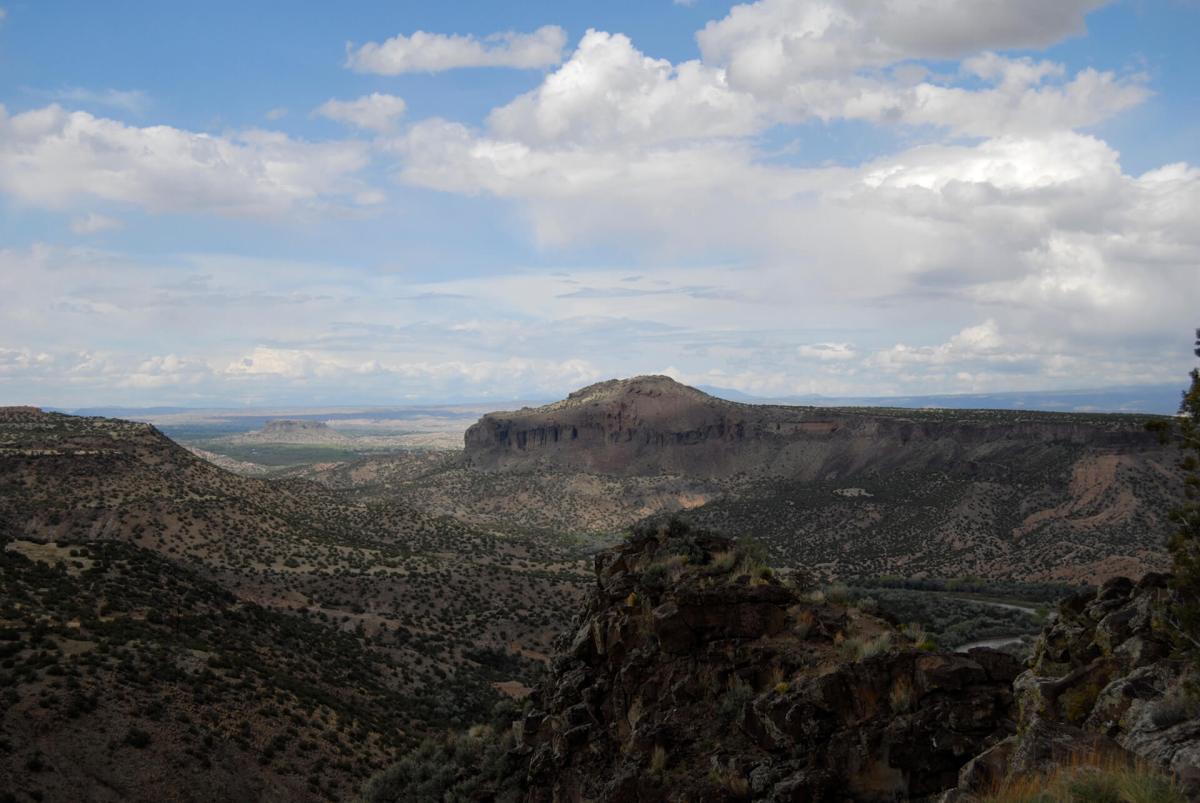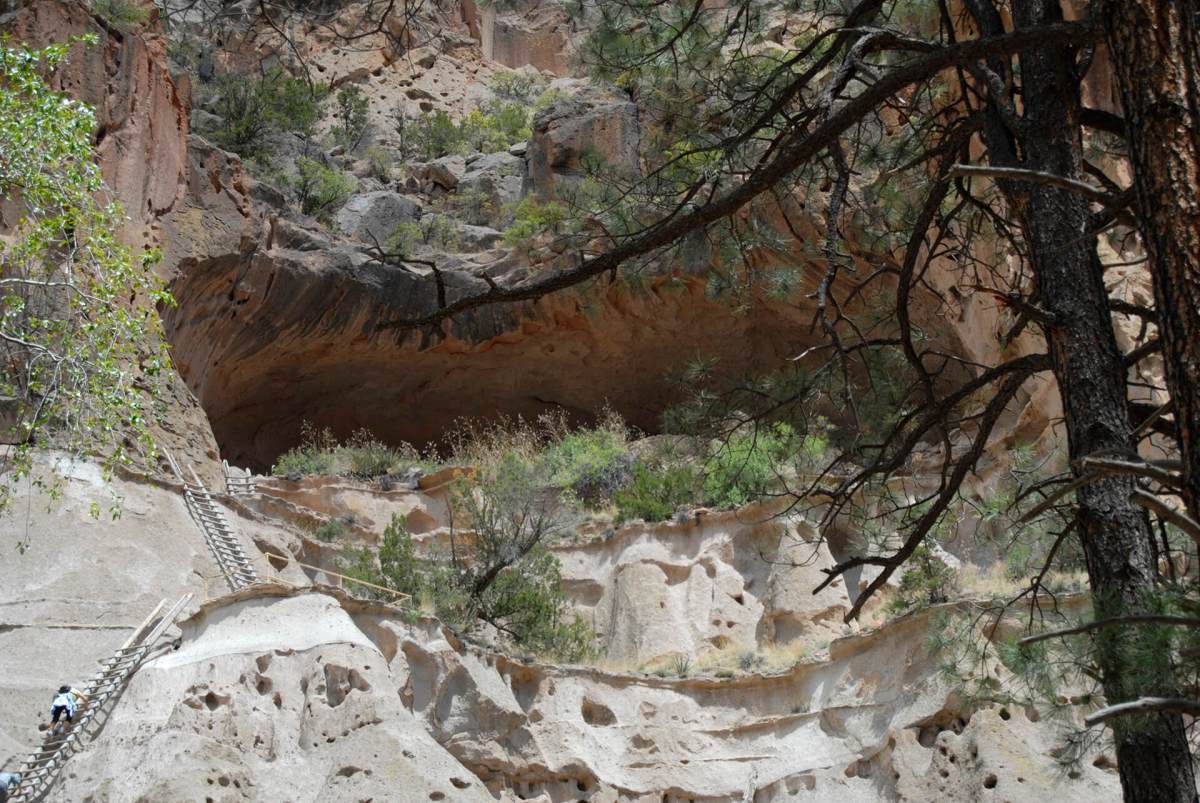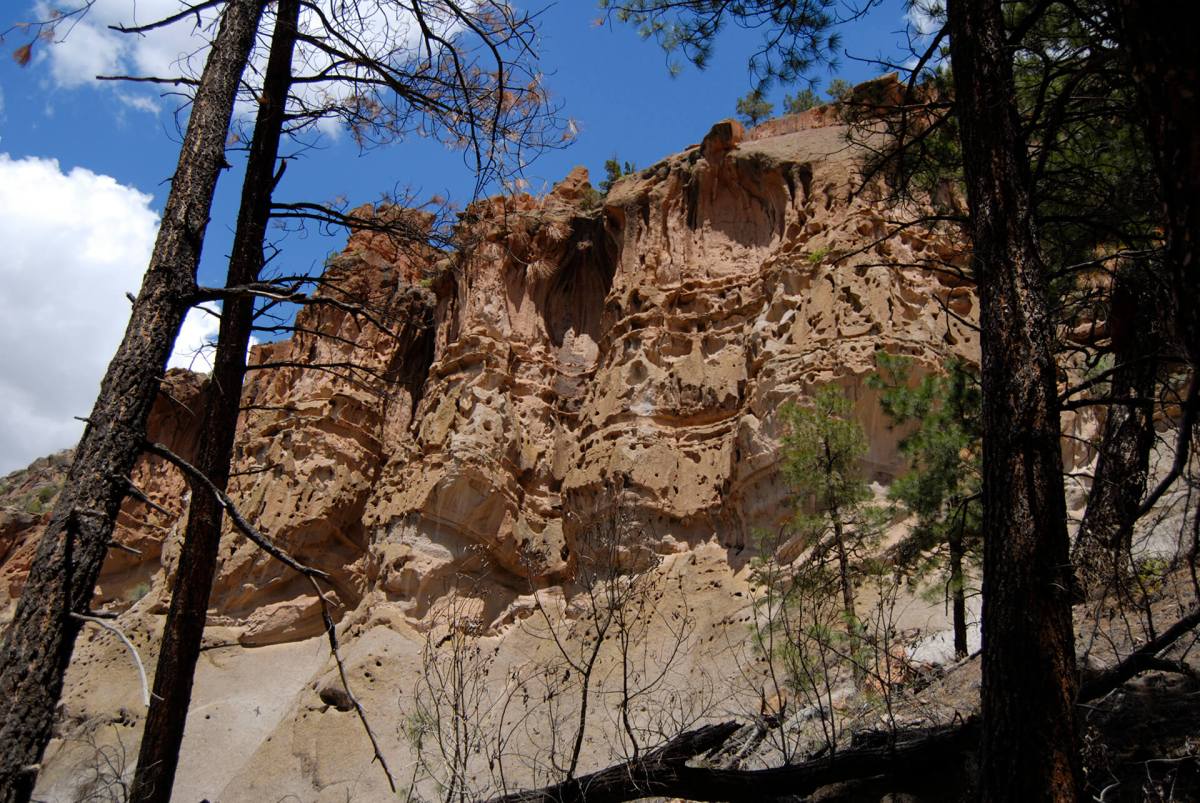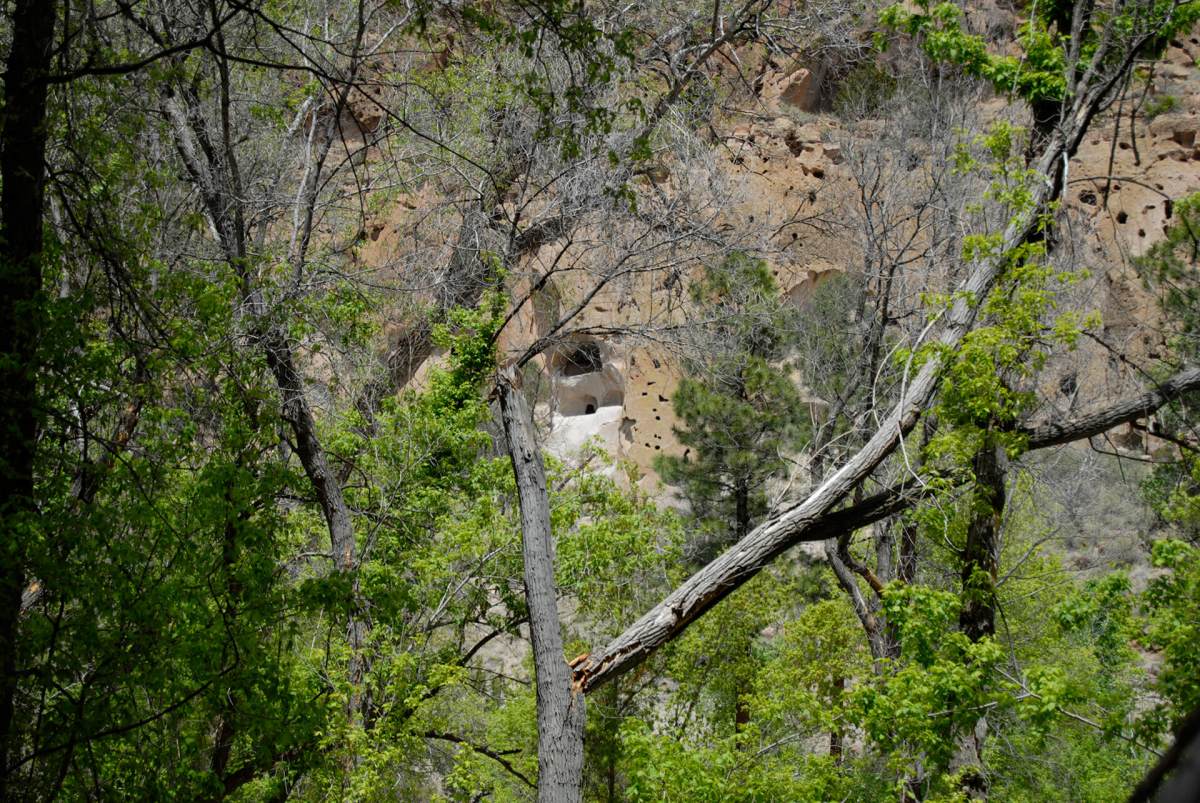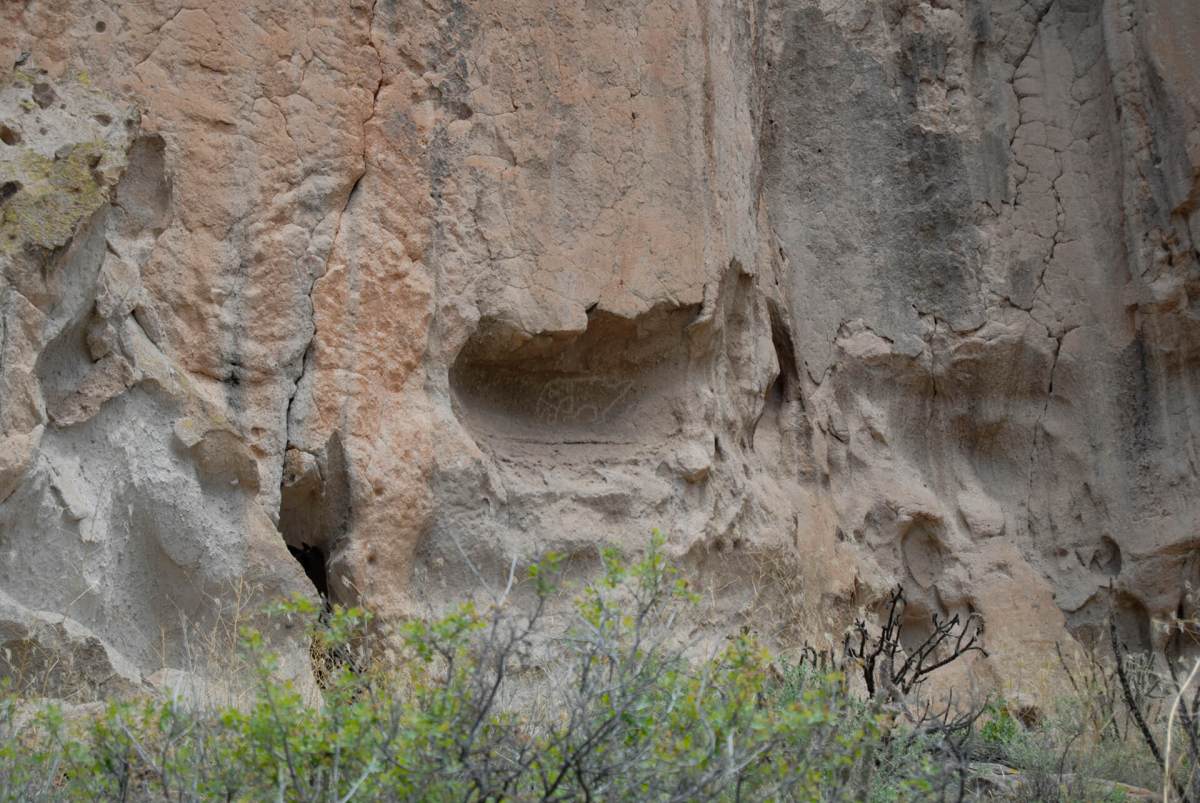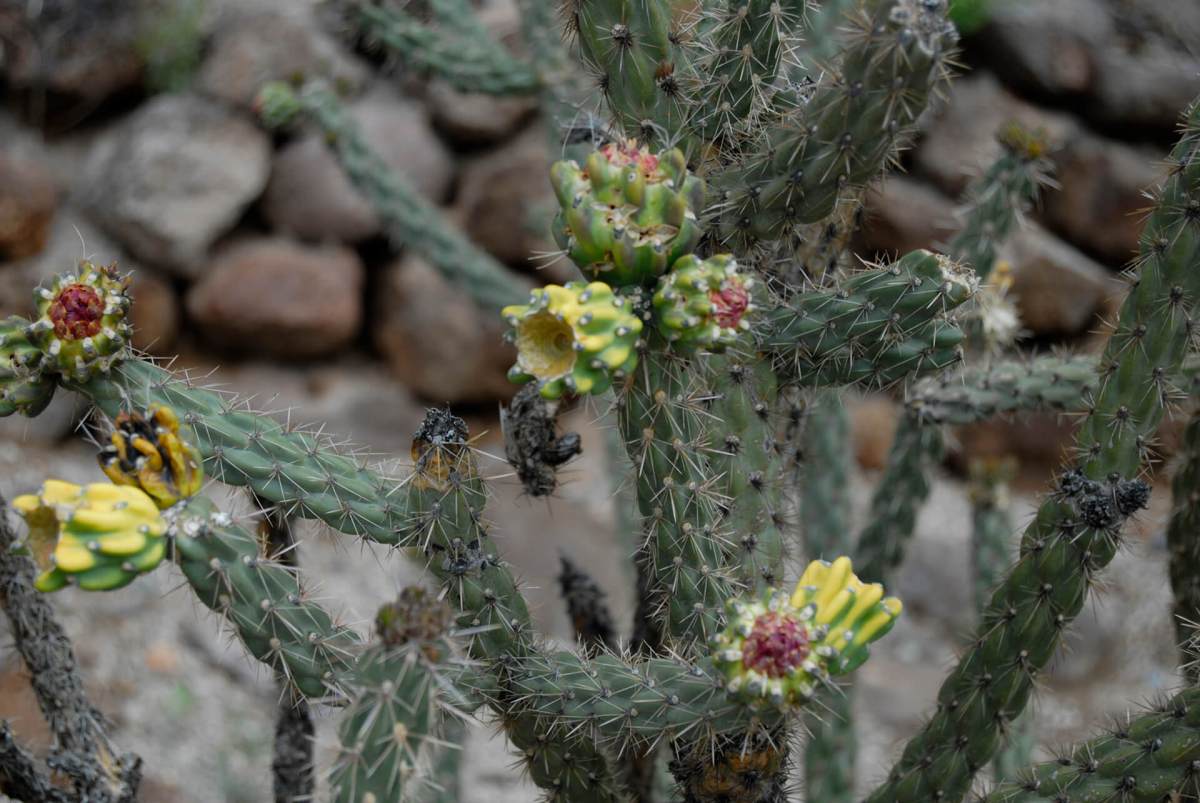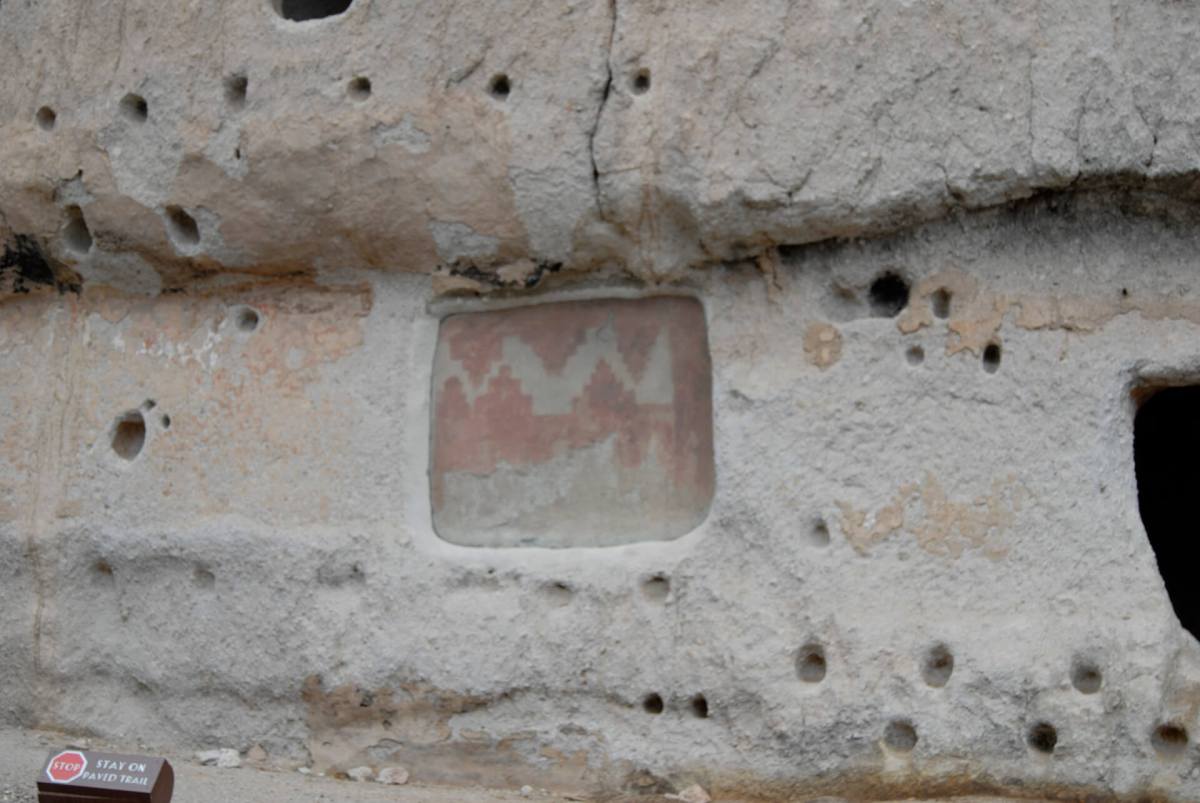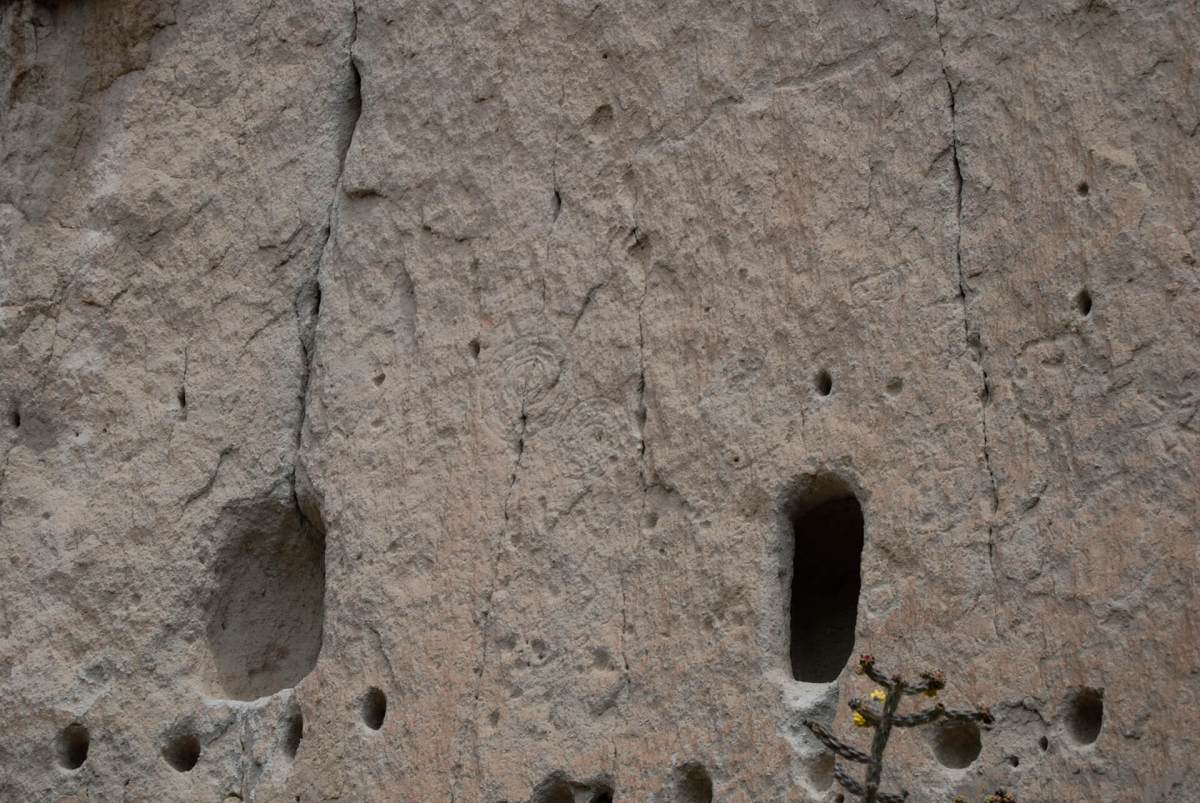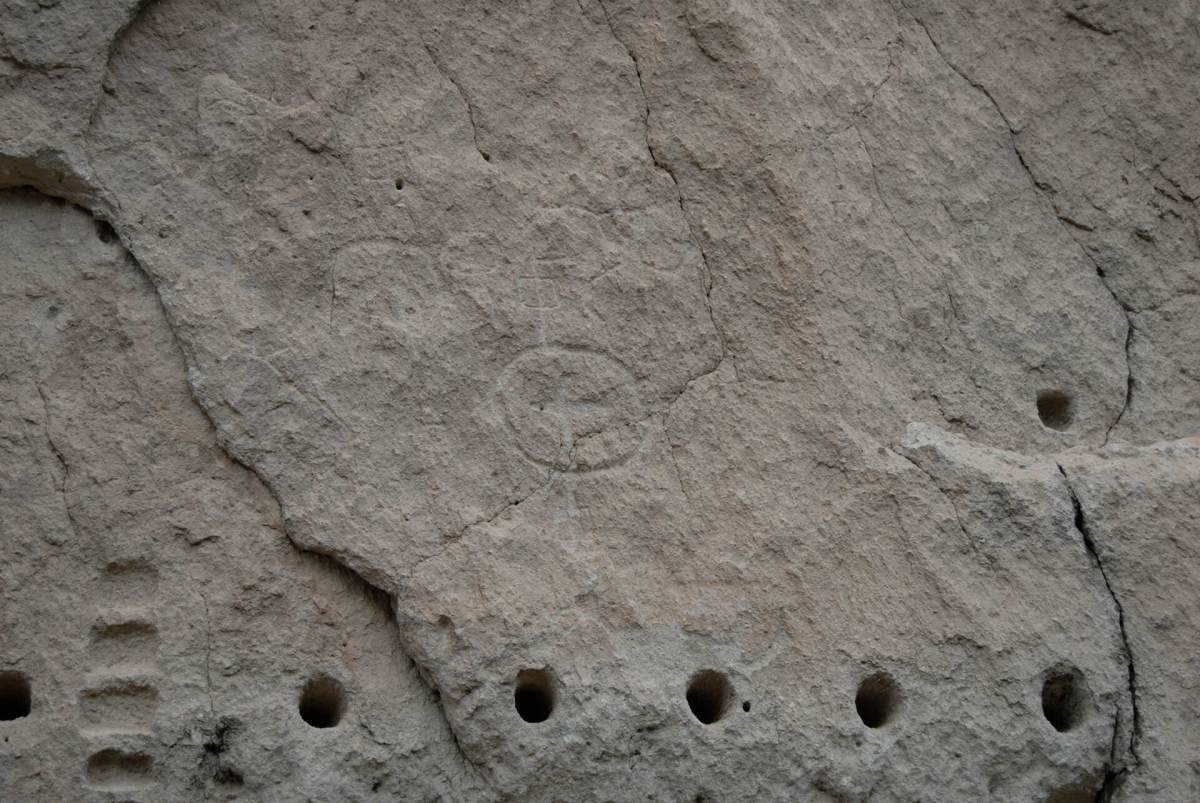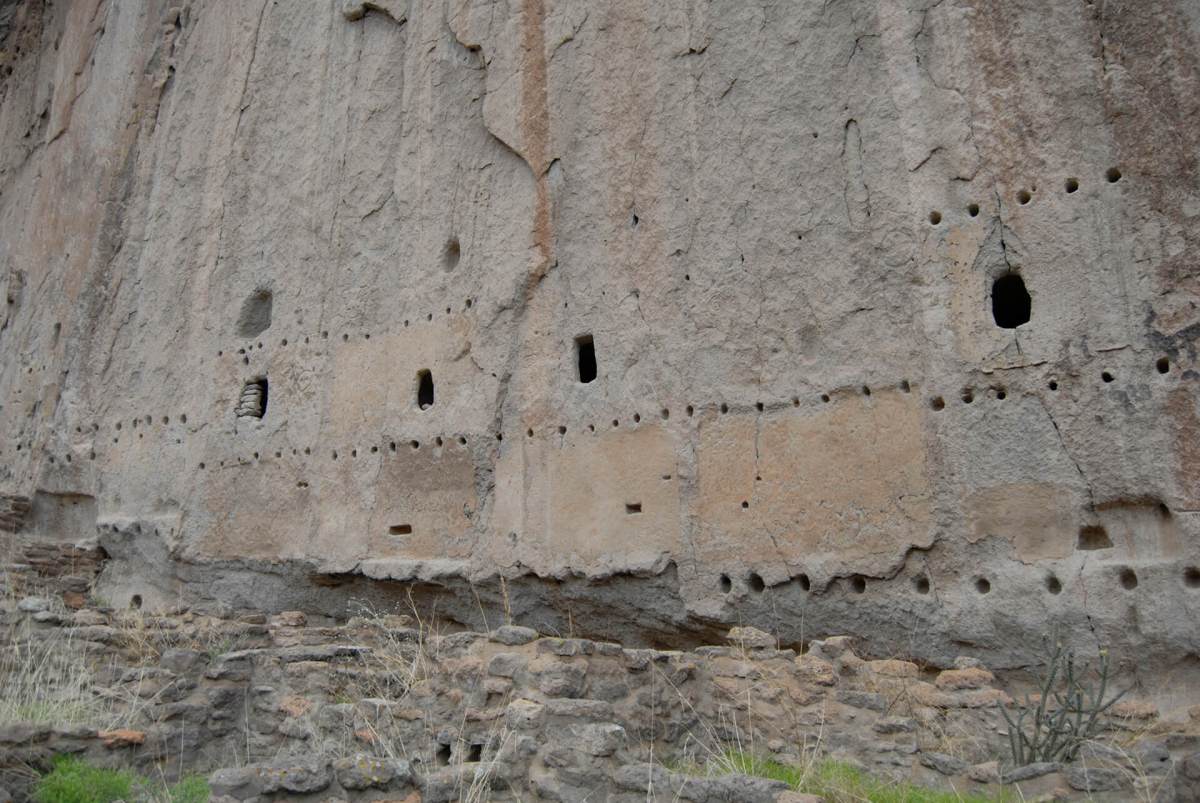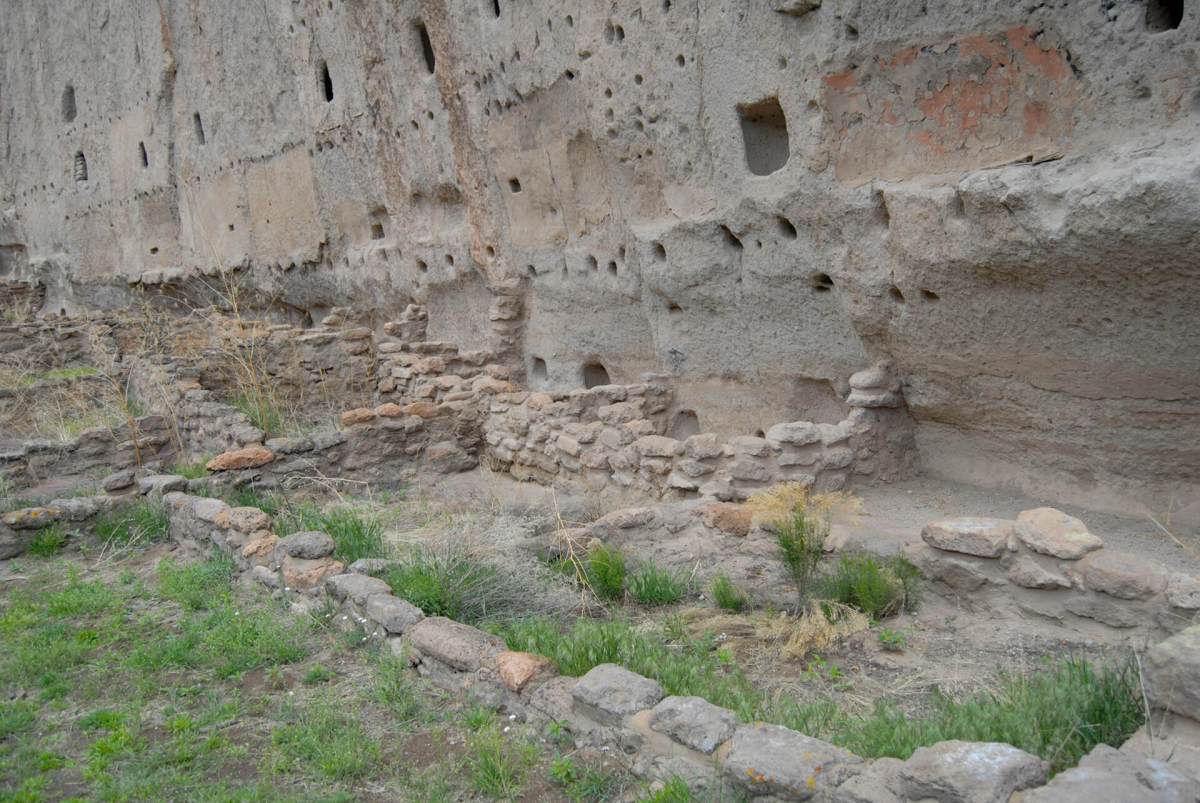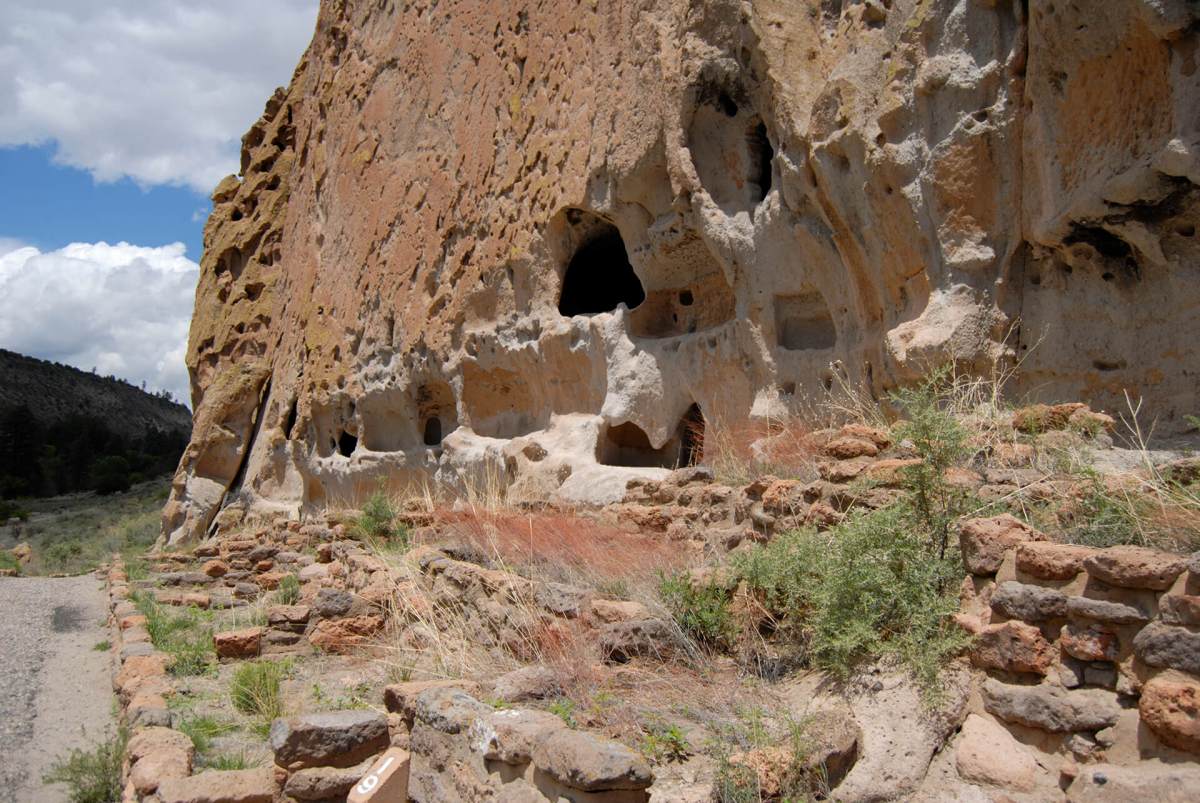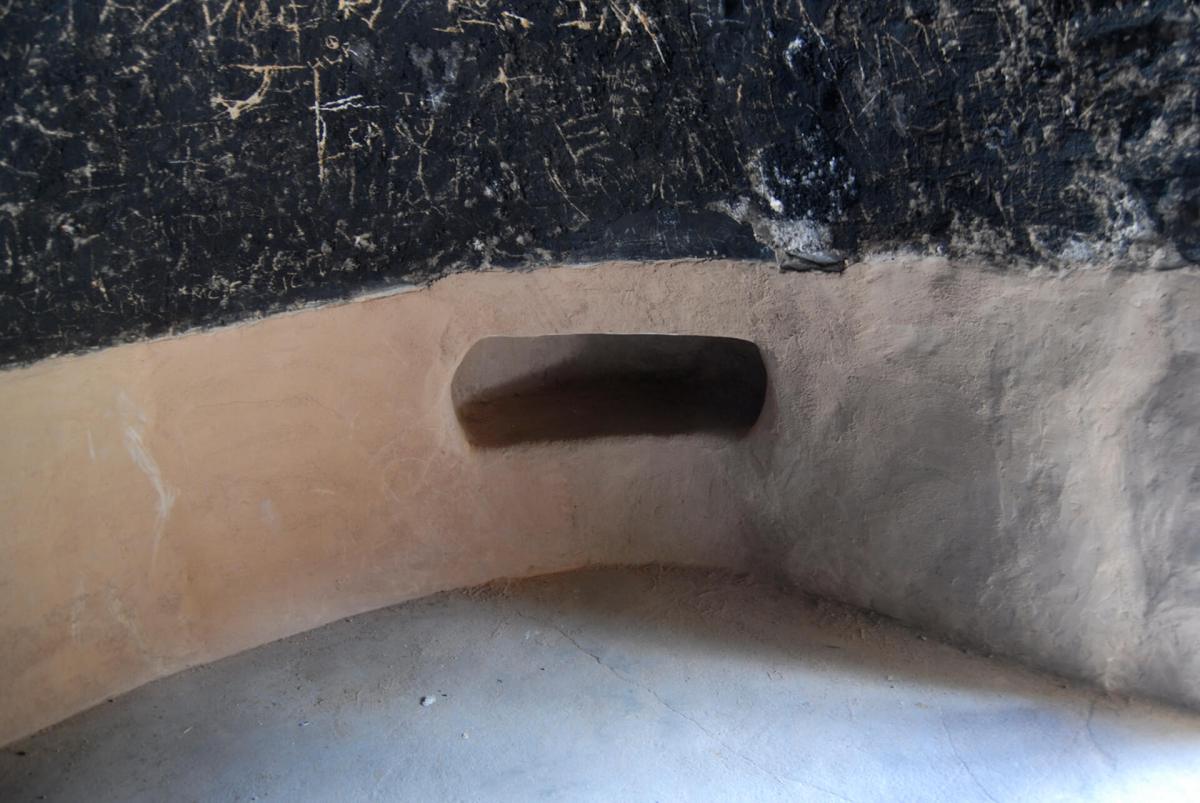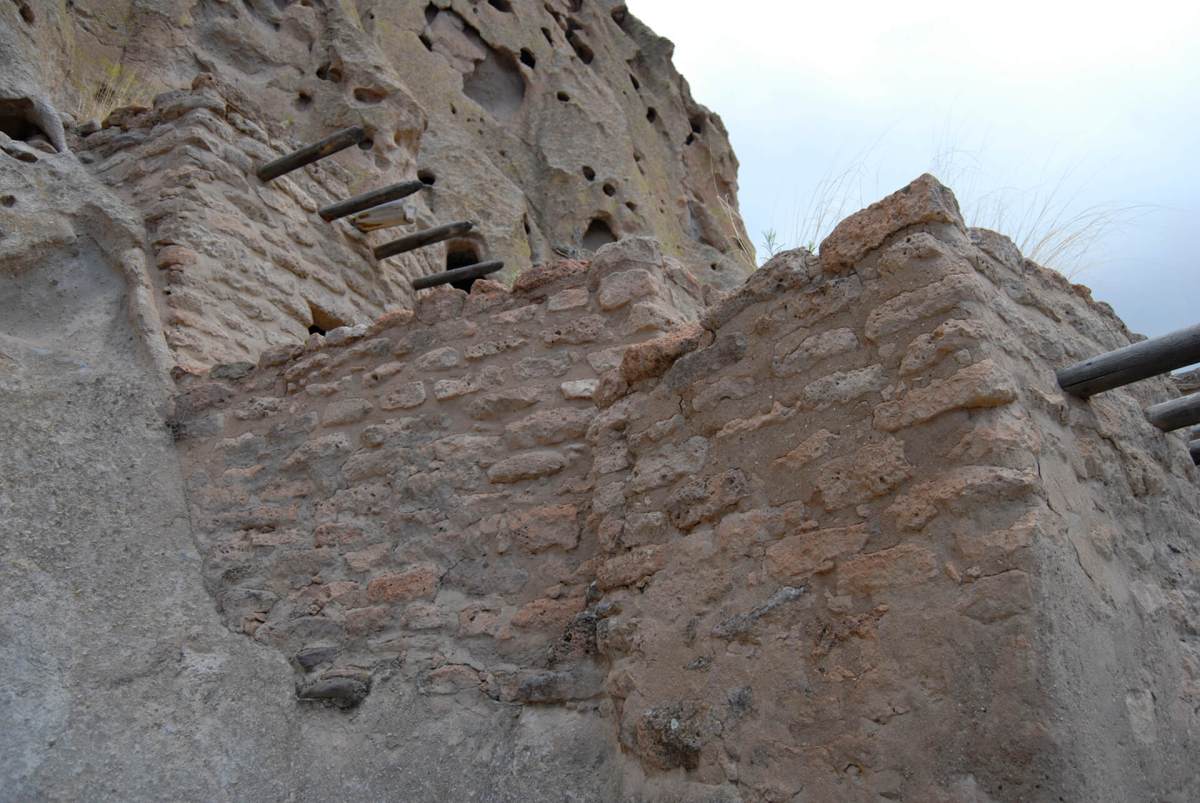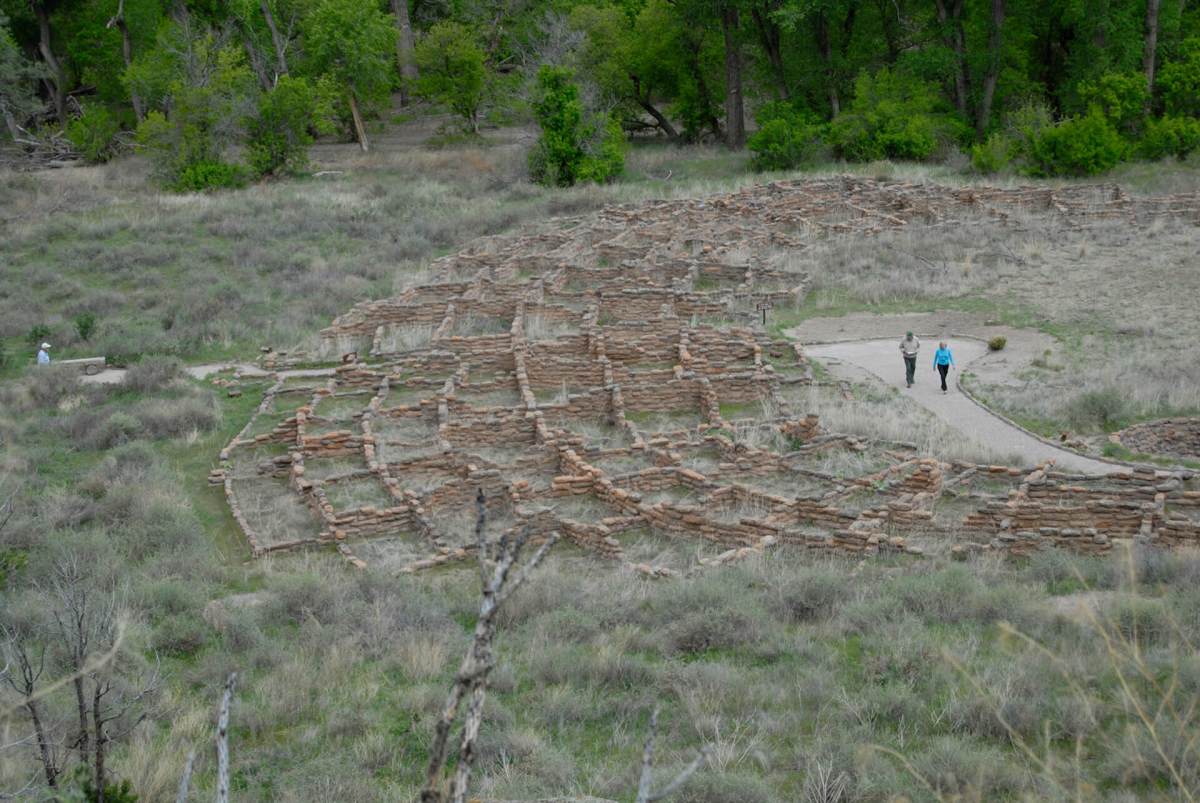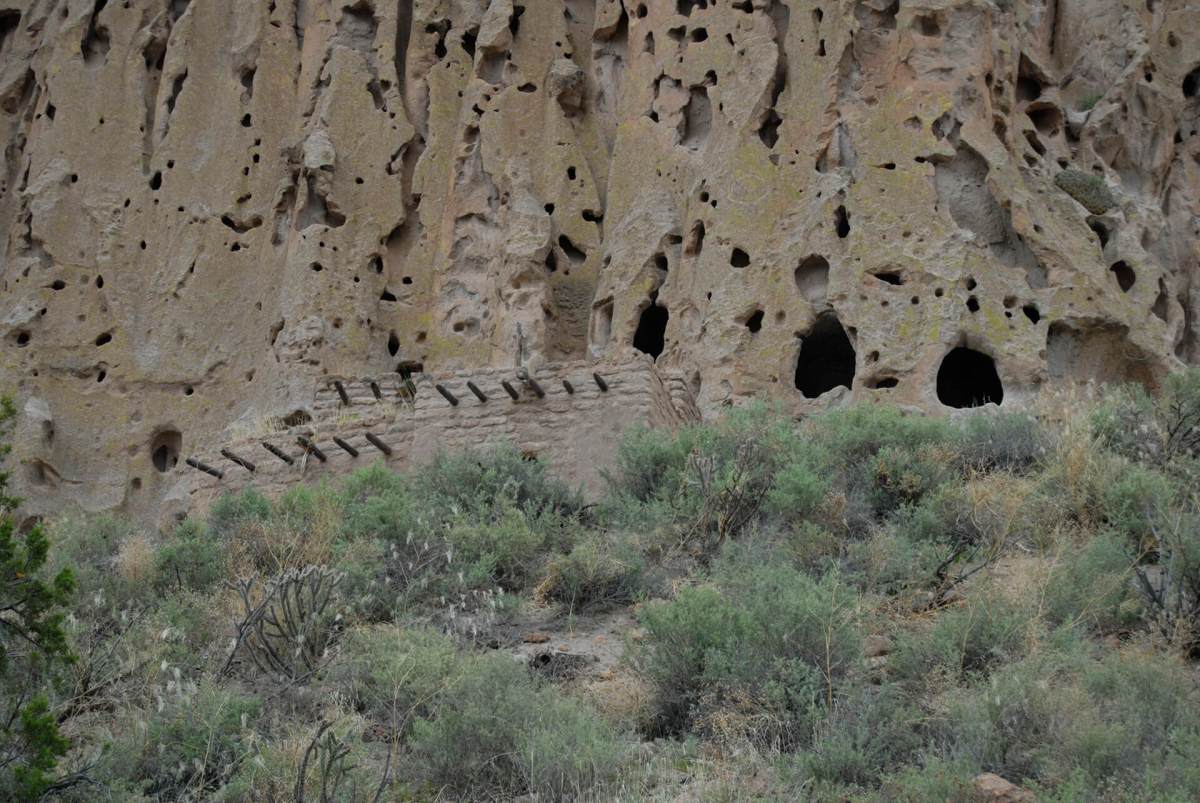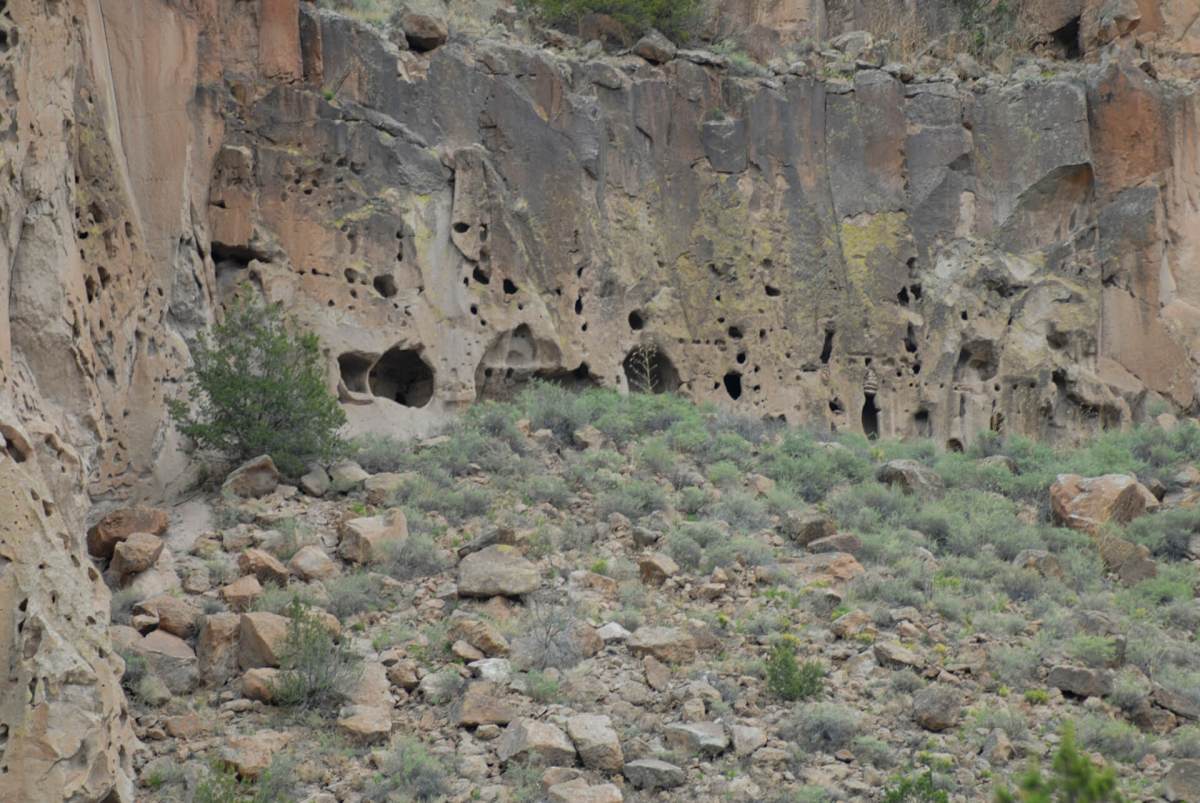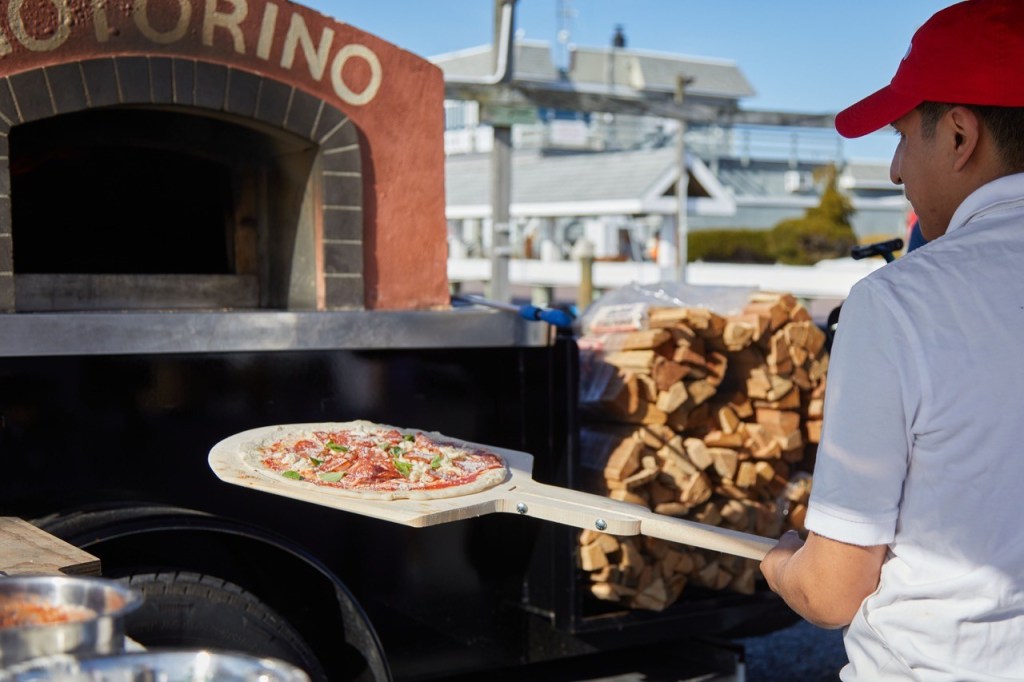Bandelier: Living In Cave Dwellings In Cliffs

Bandelier National Monument was a little over an hour’s drive from Dunshee’s Casita (on the web at dunshees.com) in Santa Fe, the delightful B&B that was our headquarters on this trip out to the Southwest. In fact, our first-ever column in The Indy recounted our experience on another leg of the trip — our visit to Mesa Verde National Park in Colorado. These two sites, about 250 miles apart and from overlapping time periods, are two diverse glimpses into Native American life hundreds of years ago.
En route to Bandelier from Santa Fe, we passed by the infamous Los Alamos, with all its signs that forbid entrance, not that we were interested. And we stopped for a great lunch at a little spot operated by Native Americans of the area that was just a small corner in one of the largest package stores imaginable. (Sadly, it was before we became serious travelers, so we didn’t do as we do now — take photos of everything we want to chronicle with our mobile phones. So, we can’t really say where it was or what it was called. But, happily we’ve solved that and our mobiles are perhaps our best tools for reporting as Old Dogs.)
So, on to Bandelier — Ancestral Pueblo people lived there from approximately 1150 to 1550 AD, carving out amazing-but-not-very-tall homes (men were only about 5’3 and women about five feet) into the area’s cliffs of volcanic tuff. Tuff is an igneous rock containing the debris from an explosive volcanic eruption — and there is a vast amount of it in Bandelier.
We found the caves in Bandelier are quite different from the entire villages carved into the cliffs of Mesa Verde (occupied from 600 to 1300). We were able to climb into individual dwellings by means of rudimentary wooden ladders, and we walked around inside them observing the smoke holes, fireplaces, storage shelves, and, outside, the holes in the cliff that held wooden poles with awnings that protected them from the hot sun. And spread out below the cliff dwellings were the outlines of countless structures built of stone.
The Pueblo people planted crops atop the mesas, mostly corn, beans, and squash. To this basic diet, they added native plants and meat of deer, rabbit, and squirrel. And they raised turkeys, both for meat and for their feathers. It wasn’t until after Bandelier’s cliff-carving residents abandoned the area in the 1550s that they began building the pueblos we associate with them now.
Operated by the National Park Service, Bandelier National Monument comprises more than 33,000 acres of beautiful canyons and mesas. Besides its amazing cliff dwellings, it also shows signs of human presence — petroglyphs, for example — from over 11,000 years ago. Its abundant life today is a wide range of the flora and fauna of the region, giving these lucky dogs many more things to see, even beyond the fantastic dwellings. Topped with the incredibly blue sky and white clouds of the Southwest, it was a beautiful day in a beautiful place.
Visit our website at olddogsnewtrips.com, and we welcome your comments on our Facebook page — Old Dogs, New Trips.

